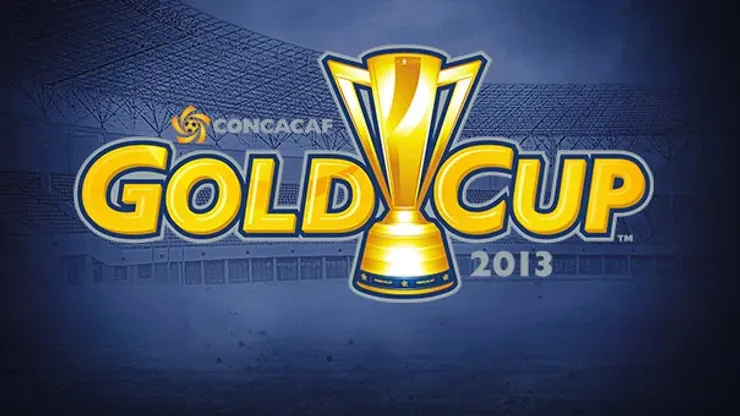
The 2013 Gold Cup competition begins on Sunday, July 7 and runs through July 23.
The continental showpiece for North and Central America has gone through various reformations, but the current format has been in place since 1991 and the competition has occurred 11 times until now, roughly every other year. Prior to being called the Gold Cup, it was known as the CONCACAF Championship and was erected in 1963 with Costa Rica being crowned as the inaugural winners. The competition continued until 1971, hosted every two years. After 1971, the competition would serve as the qualification tool for the World Cup, and was hosted every four years, played in a league format.
The Gold Cup competition is not widely known around the world, and perhaps is the second least prestigious event when it comes to continental competitions; the quality of soccer, though, has improved. With the creation of the CONCACAF Champions League, more money is being funneled into the region and has created stronger domestic leagues throughout the region.
MORE — CONCACAF Gold Cup Analysis: Group A.
MORE — CONCACAF Gold Cup Analysis: Group B.
MORE — CONCACAF Gold Cup Analysis: Group C.
MORE — CONCACAF Gold Cup TV Schedule.
The United States has served as the host for the event since 1991, twice co-hosting with Mexico. Although this set up may give the United States an unfair advantage, CONCACAF and the participating nations benefit greatly economically due the average American’s disposable income and the large immigrant population hailing from neighboring countries. The competition has been dominated by Mexico and the United States, winning it six and four times respectively. A surprise victory by Canada over guest participants Colombia was a shock to the footballing community, but since then, parity has been restored.
Qualification for the Gold Cup is split up into three different divisions. The first is North America, consisting of Canada, Mexico and the United States, and all three automatically qualify for the competition. The United States and Mexico are the obvious powerhouses of the continent, but Canada’s automatic qualification has been questioned. The last time Canada made it to the final round of the CONCACAF World Cup qualification, in which 6 teams compete for 3 automatic World Cup spots, was in 1998, finishing bottom of the group. Better teams in Central America and the Caribbean have to go through qualification rounds in order to compete at the Gold Cup, but perhaps Canada’s inclusion could be explained by a strong financial interest, drawing large crowds into their neighboring country.
The next division controls the Central American entrants, and this is where it gets a little complicated. The Central American teams are part of an organization called UNCAF, which is a subsection of CONCACAF and holds its own tournament, the Copa Centroamericano, every two years. Costa Rica has been that region’s strongest team, winning the competition 7 times, followed closely by Honduras. While the competition itself is staged to determine the UNCAF champions, it also plays a secondary role by allowing the top 5 teams to participate in the CONCACAF Gold Cup. It may be easier to play a regular league format to pick out the best 5 teams; the competition however is broken down into two groups, leading to the knockout stages and ultimately one winner.
Finally, the last division and perhaps the most complicated one (as if they are coming in stages), controls the Caribbean participants. The Caribbean countries play in the Caribbean cup to determine the 4 entrants into the Gold Cup. In order to qualify for the Caribbean cup last year, 23 teams played in two rounds of qualifications in order to narrow it down to 6 teams, which joined Jamaica (as the holders) and Antigua & Barbuda (hosts) for the 2012 Caribbean Cup. Teams were then divided into two groups of 4 with the top two sides in each group advancing to the knockout stages and thereby advancing to the Gold Cup. Cuba are the reigning champions of the competition, having defeated Trinidad & Tobago 1-0 in the final.
From the three divisions, a total of 12 teams qualify for the Gold Cup and are then divided into three groups of 4, with the top two teams from each group advancing, as well as the two best placed 3rd place teams. Mexico go into this Gold Cup as reigning champions having won the competition back to back in 2009 and 2011.
Due to the World Cup qualifications, some of the teams currently competing in the 4th round of the qualifiers, have left their star players at home and arrived with weakened teams. This may dampen the mood of the competition, but spectators will be hoping that it will encourage an upset and lead to a more open Gold Cup, one that isn’t dominated by the traditional two. The competition kicks off on July 7th between Canada and Martinique at the Rose Bowl, followed by Mexico vs Panama on the same day, later on at night. Although this competition does not come with star names like the Confederations Cup, it should provide enough entertainment to satisfy football hungry fans around the world.
200+ Channels With Sports & News
- Starting price: $33/mo. for fubo Latino Package
- Watch Premier League, Liga MX & Copa Libertadores
The New Home of MLS
- Price: $14.99/mo. for MLS Season Pass
- Watch every MLS game including playoffs & Leagues Cup
Many Sports & ESPN Originals
- Price: $10.99/mo. (or get ESPN+, Hulu & Disney+ for $14.99/mo.)
- Features Bundesliga, LaLiga, NWSL, & USL
2,000+ soccer games per year
- Price: $7.99/mo
- Features Champions League, Serie A, Europa League & EFL
175 Premier League Games & PL TV
- Starting price: $7.99/mo. for Peacock Premium
- Watch 175 exclusive EPL games per season






